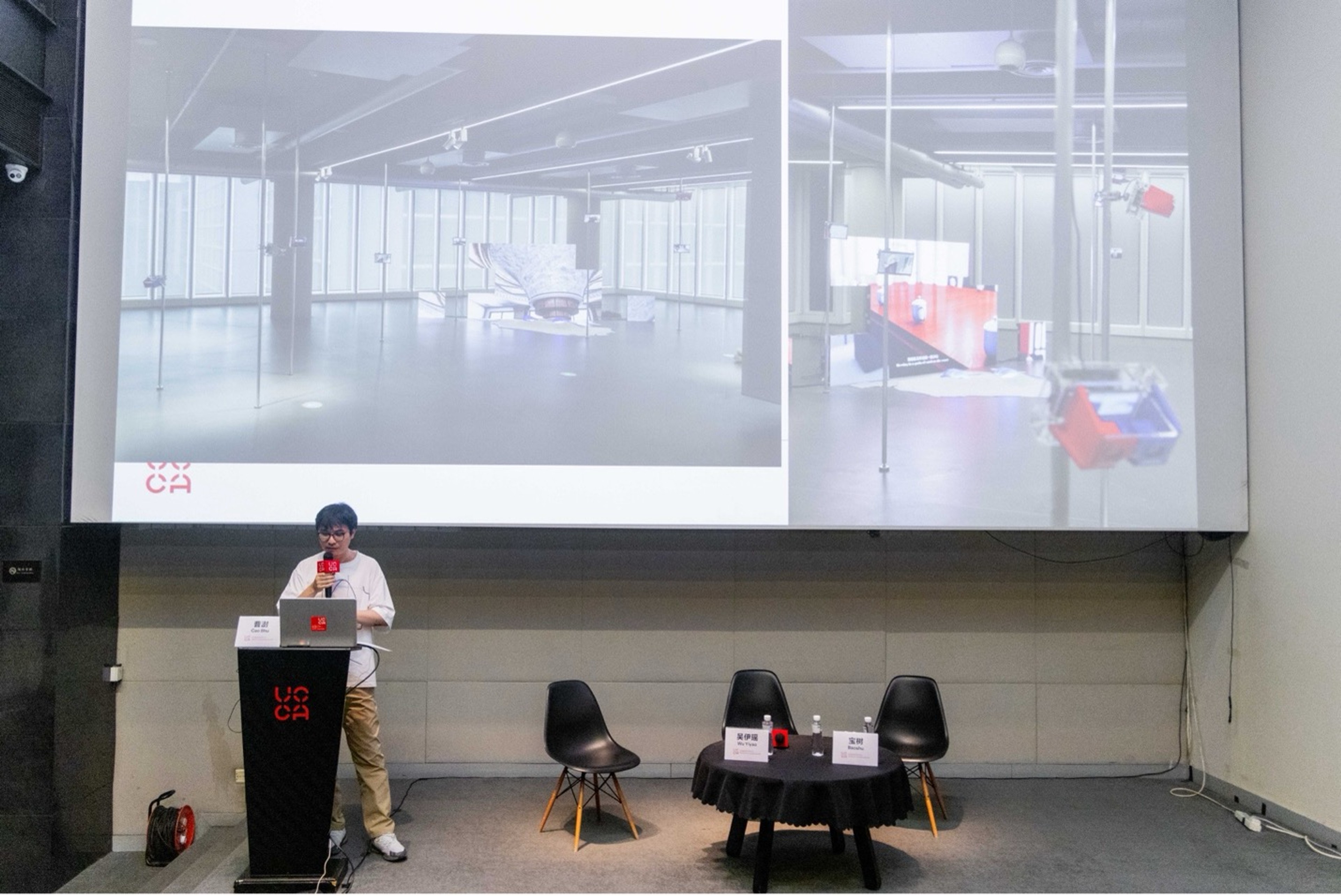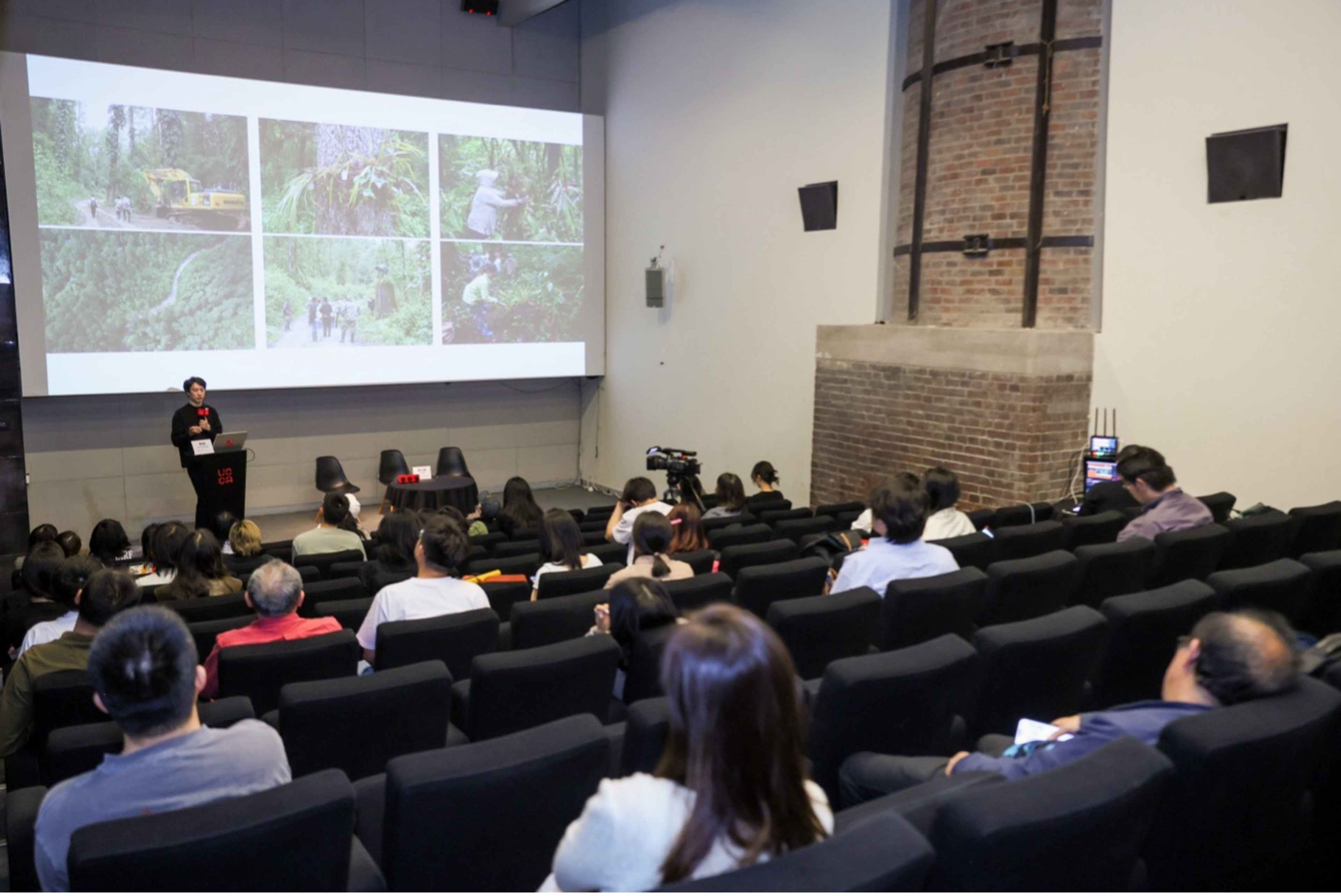I. With Ants as Prelude

- Date: April 20, 2025
- Location: UCCA Auditorium, Beijing
The parallel dialogue series "Symbiosis and Temporal Flow", jointly initiated by UCCA Center for Contemporary Art and the Berggruen Research Center at Peking University, aims to explore the resonance and collaboration between researchers from diverse scientific disciplines, philosophical thinkers, and contemporary artists. The series engages with topics such as "altruistic mechanisms" and "self-awareness", encouraging exchanges from multiple perspectives and examining how diachronic intertextual mechanisms can be formed within authentic and continuous experiences of time.
The three conversations in this series will invite scholars from fields such as biology, medical anthropology, and science fiction writing, to engage in dialogue with artists who have experience in cross-media practices.
In the first conversation of the series, evolutionary biologist Professor ZHANF Guojie and artist LIU Shuai will engage from the dual perspectives of scientific research and artistic practice. Beginning with the life networks revealed by ant societies, they will explore the deeper relationships of multispecies symbiosis.
Drawing from his research in biodiversity genomics and evolutionary ecology, Professor Zhang will discuss how ants, through their complex social structures, modes of cooperation, and genetic adaptations, achieve both species evolution and co-shaping of environments. His reflections will offer insights into the dynamic equilibrium of life systems.
Artist Liu Shuai, through his artistic practice, will present ants as mediators between individual and collective, natural and artificial worlds. Using his unique artistic language, he brings attention to this small yet vital species, illuminating its ecological and ethical significance.
The dialogue will extend into philosophical questions hidden within life’s networks, exploring the boundaries of life, symbiosis, and perception. The conversation will be moderated by Lu Qiaoying, Assistant Professor in the Department of Philosophy at Peking University and a 2020–2021 Berggruen Fellow.
Speakers
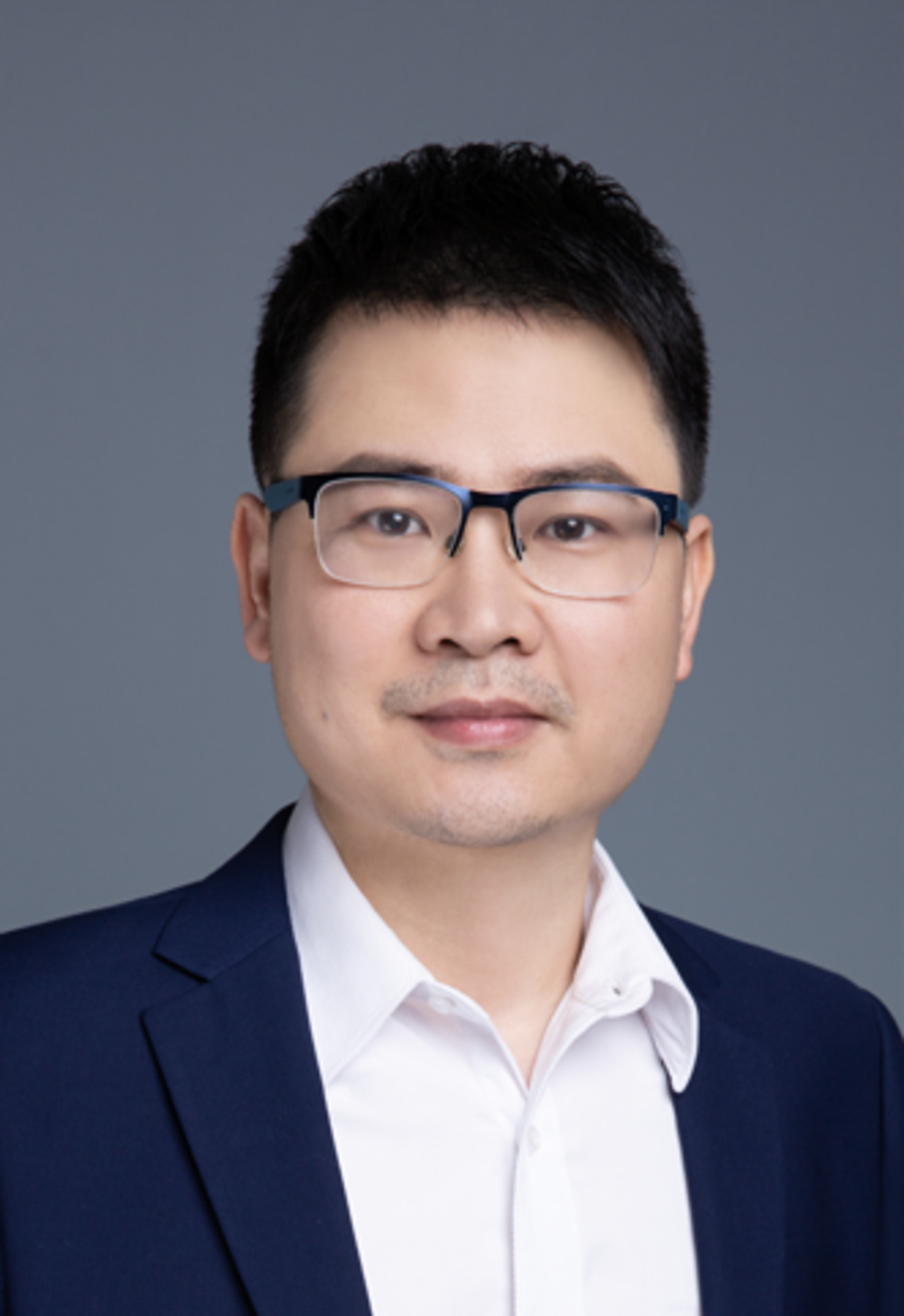
Zhang Guojie
Chair Professor and the founding director of the Centre for Evolutionary & Organismal Biology at Zhejiang University
Zhang Guojie’s research group specializes in biodiversity genomics and genome evolution, motivated by a fascination with the diverse array of species and their remarkable variations in morphology, physiology, and behavior. By employing interdisciplinary approaches, his research tackles fundamental questions regarding the origin of species and has revealed molecular mechanisms underlying speciation and adaptation across a wide range of animal taxa, including humans. Furthermore, his group has established ants as model systems for investigating animal social evolution.
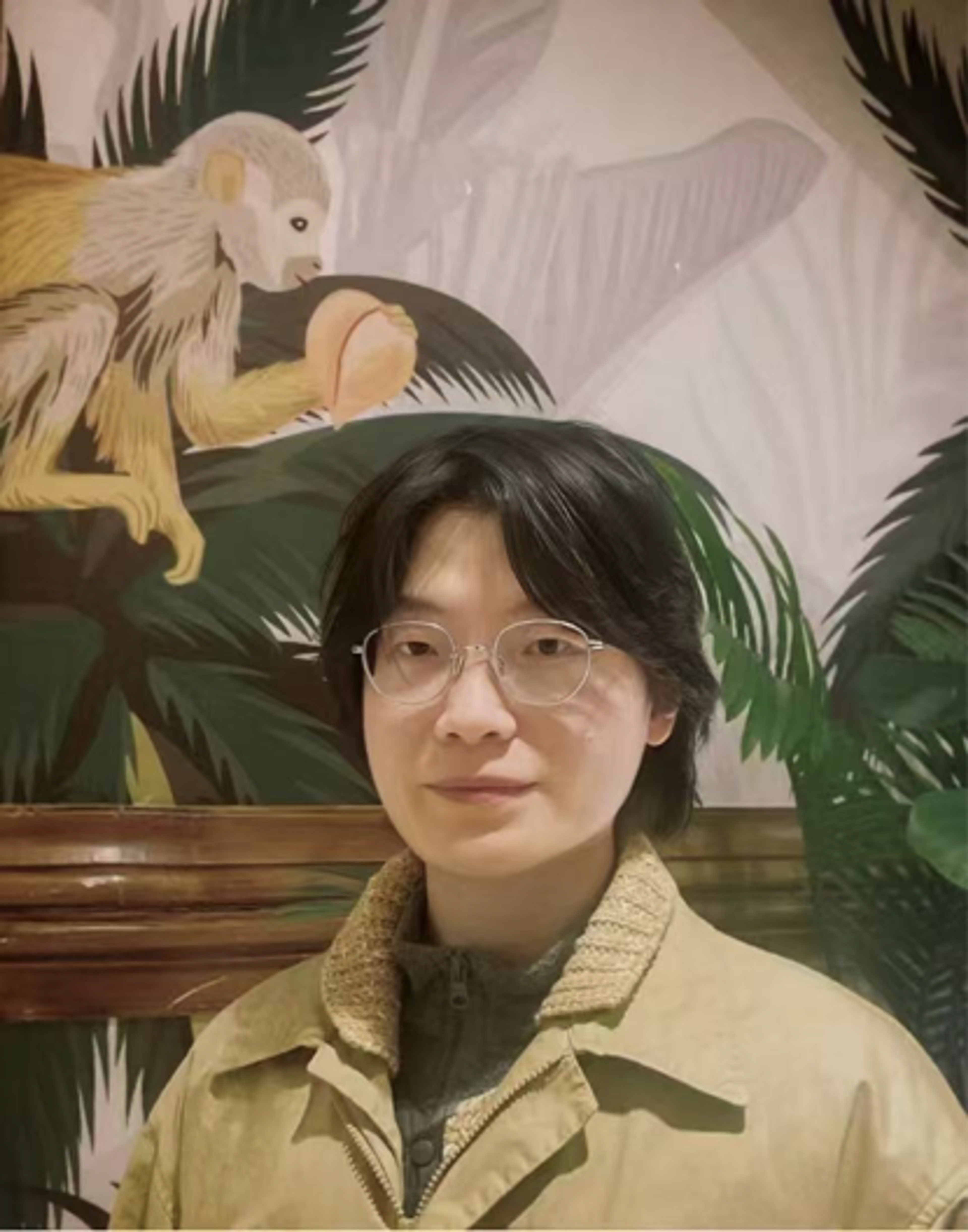
LIU Shuai
Artist
Liu Shuai is an artist and insect researcher. His work often adopts the perspective of creatures displaced by human activity, exploring the easily overlooked glimmers and twinges between land, weather, humans, and non-human life.In recent years, his research areas have extended to the Middle East and Central Asia, focusing on the persistent damage to the ecosystem caused by secondary disasters of war such as military pollution.
Li Shuai received the UCCA & XINTIANDI RANRAN-Exploration Award, the Bio Art & Design Award, and the Prince Claus Seed Award. He was also supported by the One Way Street Foundation-Sailor Program and the Goethe-Institut.
About the Moderator
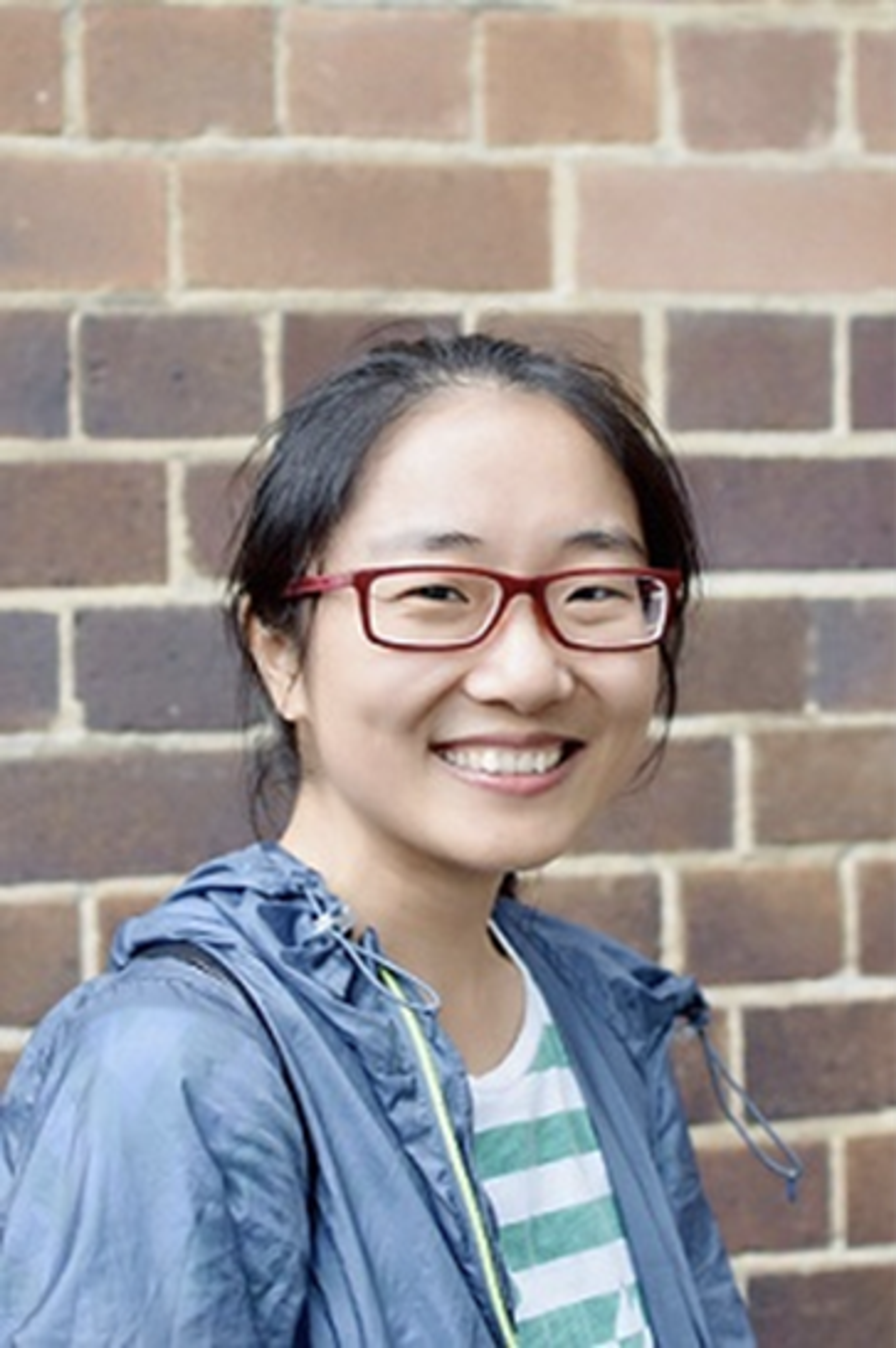
LU Qiaoying
Assistant Professor in the Department of Philosophy at Peking University
2020-2021 Berggruen Fellow
Her research focuses primarily on the philosophy of biology and general philosophy of science. Her work includes developing the theoretical foundations of the extended gene-centered approach and applying structural causal models to analyze gene causality. She has also explored topics such as units of natural selection, the revival of Lamarckism, and gene editing technology.
Lecture Notes
This first event of the “Symbiosis and Temporal Flow” series featured evolutionary biology professor Zhang Guojie from Zhejiang University, Liu Shuai, an artist, and Lu Qiaoying, assistant professor of philosophy at Peking University. The discussion used “ant” as an entry point to explore concepts such as individual vs. superorganism, consciousness, selfhood, altruism, and symbiosis.
The Superorganism: Ants
Prof. Zhang opened with an explanation of ant social structures and evolutionary processes. Despite their size, ants establish complex and efficient life networks through high-level division of labor. Using images, he showed extreme morphological differentiation among ant species. An example he provided was how some soldier ants develop massively enlarged heads to block nest entrances, while "honey pot ants" store food in their distended abdomens. These specialized ants never leave the nest and serve a single function.
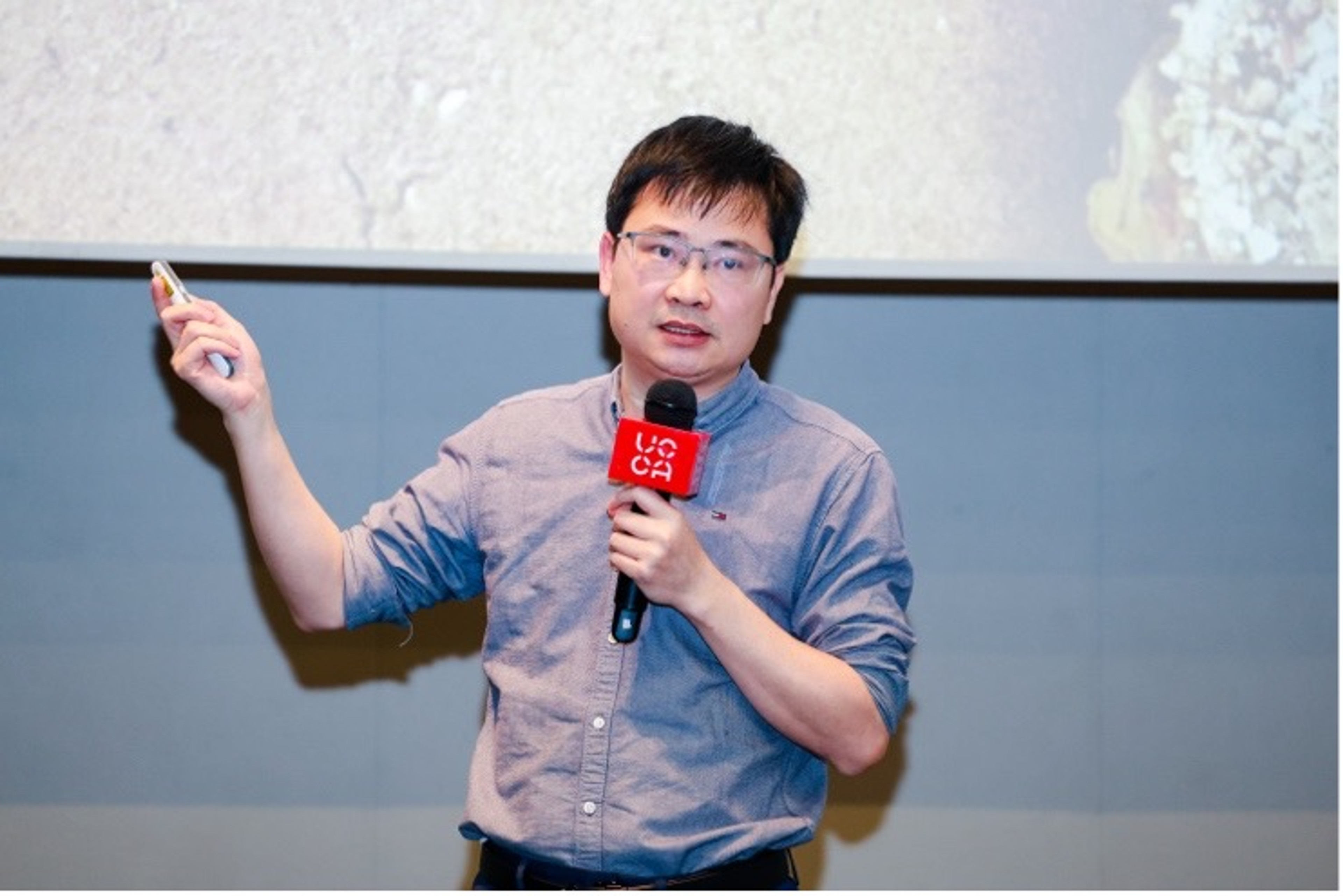
Fertilization status determines social roles: unfertilized eggs become male ants, fertilized ones become queens or workers. Queens focus on reproduction; while workers forage, build, and care for young. Their lifespans differ greatly as males live briefly, workers live a few months, and queens can survive for decades. In labs, scientists have manipulate the genetics and nutrition of worker ants to induce them to develop into queens.
This precise division of labor allows ant colonies to persist far longer than most insects. This observation led Professor Zhang to likened ant societies to human ones where high cooperation ensures collective survival. For example, an ant that finds food releases pheromones to guide others. In South America, Leafcutter ants build vast underground colonies spanning kilometers, demonstrating astonishing collective intelligence.
To manage the spread of disease in dense colonies, ants isolate waste and corpses, creating a kind of “social immunity.”
In her discussion, Zhang referenced futurist Kevin Kelly, arguing that ant colonies possess self-organizing capacities. When a flood hits, ants rapidly assign roles: carrying eggs, defending the queen, salvaging food. Their decentralized responses outperform many human disaster systems. This “superorganism” model of arts parallels human reproductive vs. somatic cell division.
From there, he then introduced theories of altruism evolution: W.D. Hamilton’s kin selection which explains altruistic behavior through genetic cost-benefit analysis (e.g., helping siblings can be evolutionarily equivalent to reproducing) and Robert Trivers’s reciprocal altruism which expands on this to include non-kin under repeated interactions.
Symbiosis emerges when mutual benefit is sustained, like leafcutter ants cultivating fungi for food. Humans too rely on symbiosis too as seen with the gut microbiota in our digestive system that help with digestion and vitamin synthesis. This shows thatco-dependency that transcends Darwinian competition and enables systemic stability.
Red Fire Ants, Nostalgia, and Narrative of Trauma
Artist Liu Shuai started his discussion with a childhood memory, weaving it into a metaphor about biological migration, cultural nostalgia, and the human condition in globalization. His project: Nostalgia of the Red Fire Ant bridges the insect worlds and human civilization.
Under 5mm long, red fire ants,are among the world’s top 100 invasive species. Introduced to the Pearl River Delta around 2000, they spread rapidly due to their aggression and lack of predators.
During a three-month residency in Leming Village, Guangdong, Liu observed the ants’ remarkable adaptability, turning discarded plastic bottles into nests and constructing maze-like mounds in sweet potato fields. The dense, enclosed structures reminded him of oppressive human architecture, sparking a whimsical idea: what if these ants kept digging until they tunneled all the way back to Argentina, their place of origin? This imagined “journey home through the Earth’s core” became a central theme in his artistic narrative.
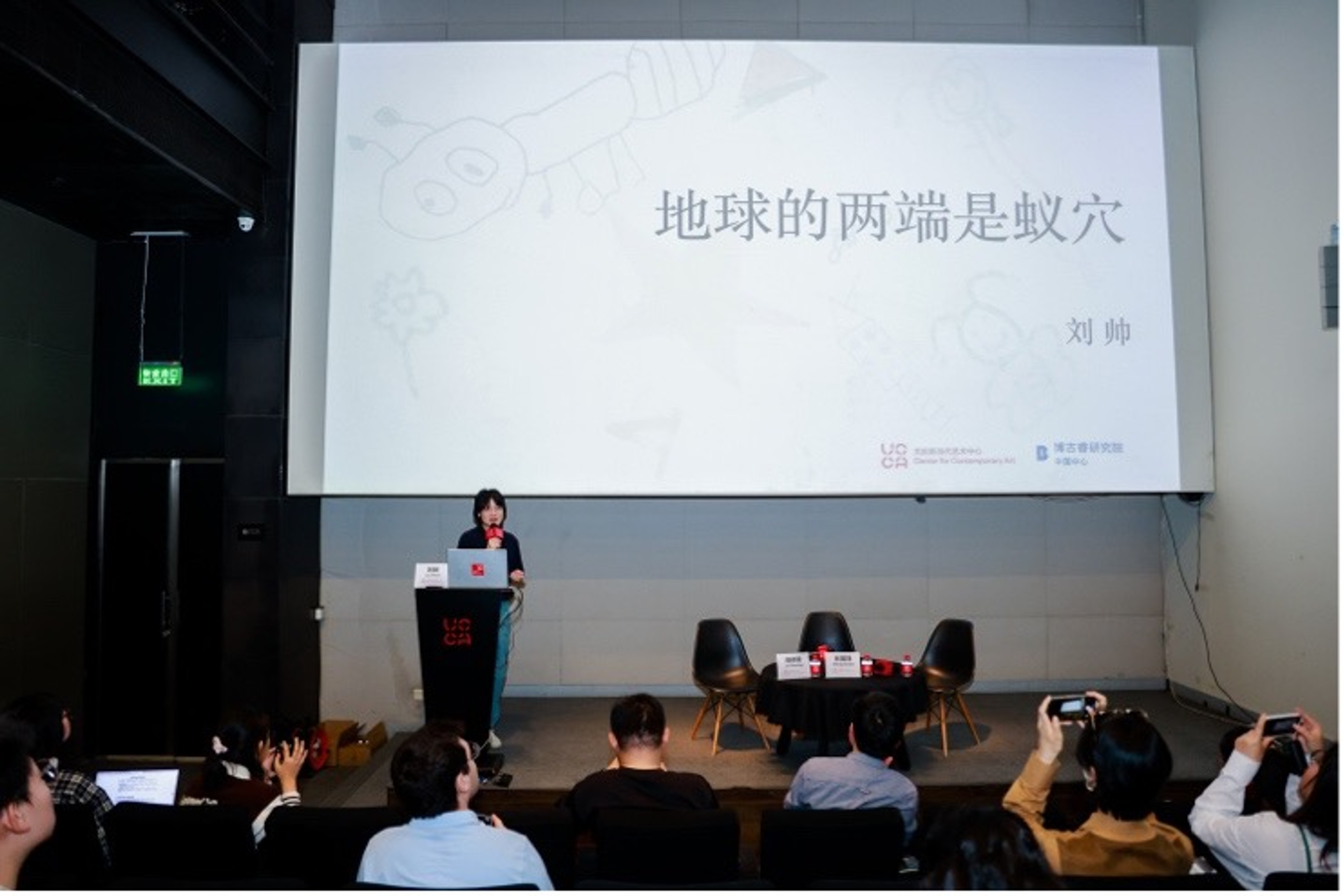
Liu drew a parallel between the ants’ use of industrial waste to build their nests and the way immigrants reconstruct a sense of home in unfamiliar places. He began to wonder whether the villagers’ view of the ants as an ecological threat might actually reflect a deeper, displaced narrative..
While connecting with communities in Argentina online, he came across a folk song with the lyric: “I belong neither here nor there; I have no age, no future.” It resonated with a line handwritten by a local villager: “Rivers and seas become roads.” The drifting, unsettled existence of the fire ants mirrored the experiences of human migrant
Later, through his connection with the Argentine community, heobtained Argentine sugar, symbolizing the ants’ homeland, and used bamboo to scatter the sugar in the shape of bilingual song lyrics. As ants carried off the grains, the lyrics disappeared allcaptured in a 45-minute dual-screen video titled The Dissolution of Sweet Nostalgia.
Afterwards, he attempted to preserve ant nests as specimens but found them too fragile. He burned and lacquered the remains into ceramics and exhibited them alongside a Campo del Cielo meteorite from northern Argentina; one from underground, one from space. This juxtaposed geological and biological migrations, linking earth and cosmos in a dual diaspora.
He emphasized that the story of “ant nostalgia” isn’t to romanticize invasive species, rather it was to challenge the simplistic notions of invasion as its nature is far more complex, full of dependencies and paradoxes.
In his project, he added war trauma by introducing a silk-spinning ant species native to southern China. With the help of bioengineering, he guided them to weave silk over a bullet-ridden shield from Kharkiv, Ukraine. This tender contrast between destruction and survival wisdom sought to honor the resilience of life.
After the Liu Shuai and Professor Zhang spoke, the session then turned to a roundtable discussion moderated by Professor Lu. This key points of discussion are summarized below:
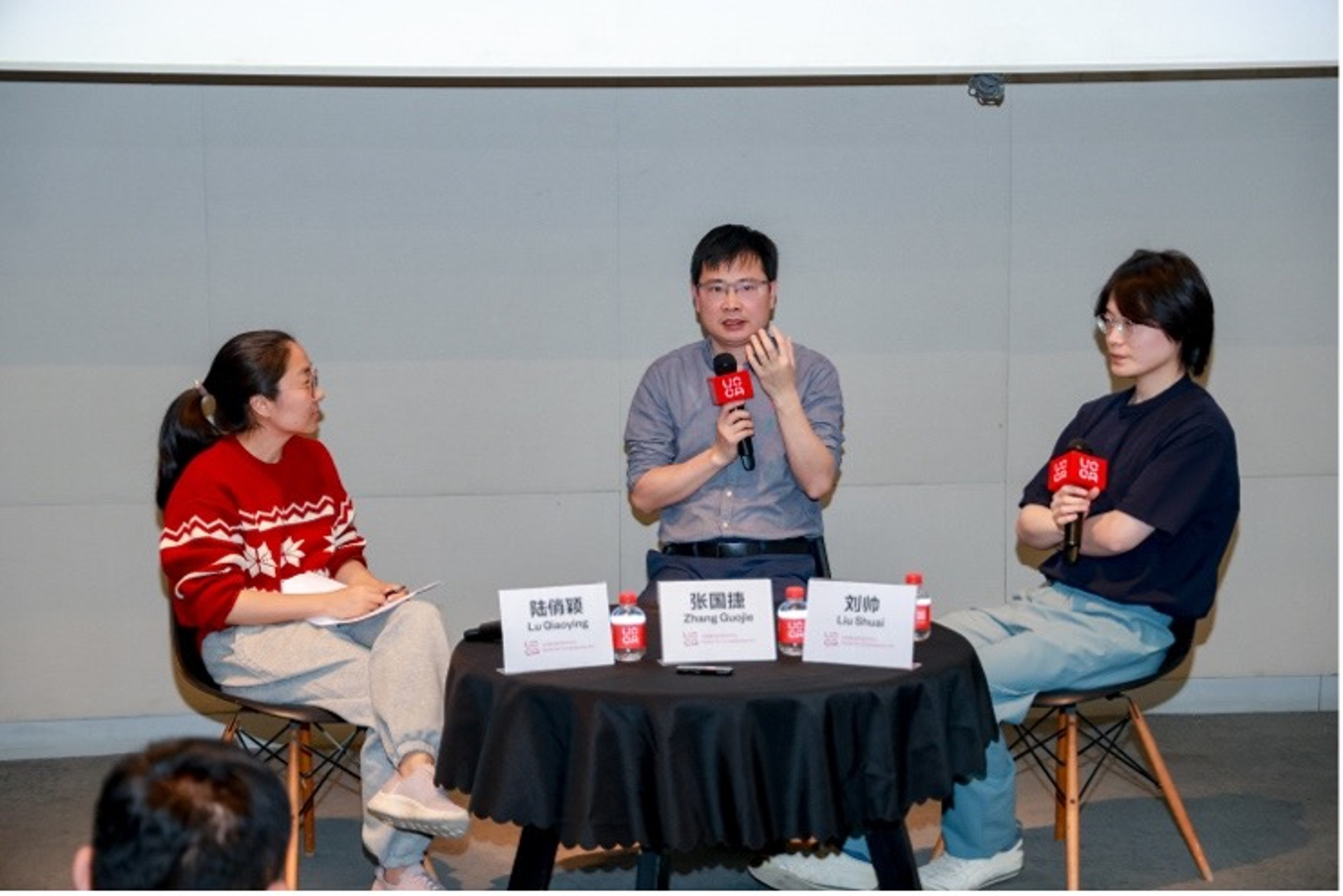
On Selflessness and the Superorganism
Professor Lu opened the discussion by asking: from a philosophical perspective, does the selflessness of worker ants make the colony resemble a multicellular organism? And how do science and art interpret the relationship between the individual and the collective?
Zhang responded that, in biological terms, an “individual” is typically defined as a self-reproducing unit. Worker ants, who cannot reproduce, have structurally different brains from queens, and in some species, they exhibit reduced vision but enhanced brain regions for learning and coordination.
In answering Professor Lu’s question, Liu answered through sharing a personal memory of accidentally stepping on a fire ant nest and being stunned by the swarm’s speed, coordination, and aggression. From this experience, he realized that while each ant was weak on its own, together, they were incredibly formidable.
Zhang added that ants can display remarkable collective behaviors under stress. During floods, for instance, they link their bodies to form living rafts to protect the queen and brood, an act of instinctive altruism. Liu noted similar mutualism of the fire ants in the village he stayed in, especially how the ants’ protected themselves against the aphids by secreting a sugary substance of which they fed on. However, to a human, aphids are agricultural pests—highlighting how ant survival strategies can conflict with human interests.
On Ant’s Perspective vs. Human Perspective
Lu then posed another question: how does an ant-centered, first-person perspective differ from the human observer’s third-person view—and what might this contrast reveal?
Liu imagined himself inhabiting the world as an ant, where space feels continuous and limitless, and the nest offers a dark, warm, and secure sanctuary. In contrast, human experience is shaped by shifting identities, evolving relationships, and constant psychological change.
Zhang noted that ants, despite group conformity, show individual behavior. Some are “shy,” others “brave.” He observed ants displayed basic medical behaviors by amputating injured nestmates and disinfecting wounds. In one case, an ant rescued another from a trap. These behaviors suggest a degree of cognitive complexity that exceeds basic instinct.
On Empathy in Science and Art
Lu then asked how empathy functions in both scientific research and artistic practice. Liu answered this question by recounting his panic after being attacked by fire ants in 2022. While harrowing, his panic soon transformed into curiosity and creative inspiration. He stressed the importance of accessible materials but emphasized that art isn’t mere public outreach, rather, it requires deep exploration.
To Zhang, he argued that scientific observation should remain objective but grounded in natural context. Raising ants helped him observe behavior closely, showing how curiosity fuels discovery. He argued for a more holistic approach to understanding life—one that goes beyond abstract genetic analysis and situates organisms in their lived
On Invasive Species as Theme and Mirror
Luthen asked: Why do artists find invasive species such a compelling theme??
Zhang explained that while species migration is a natural part of ecological history, but globalization has dramatically accelerated the pace of movement, disrupting ecosystems that no longer have time to adapt. He cautioned against simply blaming “outsiders” for ecological collapse, arguing instead for a more nuanced view that includes human responsibility.
Liu added that invasive species often carry a sense of the foreign or unfamiliar, sparking geographical and historical imagination which he terms as “cosmic slices.” When foreign ants appear in otherwise familiar settings, they become a mirror for the human experience of migration and displacement. He sees ants as metaphors for identity anxiety: caught between the need to adapt to new environments and the risk of being excluded from them.
On Art-Science Collaboration
Professor Lu closed the discussion by asking whether meaningful collaboration between artists and scientists is possible.
In his response, Liu said true collaboration requires mutual respect and brainstorming around shared topics, emphasizing that it’s not about simplifying science for artistic use, but about creating space for dialogue As an example, he cited his work with Middle Eastern scientists on postwar ecological recovery, which allowed them to break down disciplinary boundaries and think together in new ways.
Zhang agreed, noting that art and science offer complementary ways of understanding the world. Citing neuroscientist Eric Kandel’s In Search of Memory, he highlighted early 20th-century Vienna as a prime example of art-science synergy: while scientists explored the workings of human cognition, artists were developing new forms to express perception. In his view, science helps us understand the structure of our minds, while art offers the language to express that understanding.
---
Written by: HE Qirui, Berggruen Intern
Translated by: Julian Chiao, Berggruen Intern
About the UCCA
The UCCA Center for Contemporary Art is China’s premier museum of modern and contemporary art. Committed to the belief that art can deepen lives and transcend boundaries, UCCA presents a wide range of exhibitions, public programs, and educational initiatives across four architecturally and programmatically distinct locations. Owned by a group of committed patrons, it is funded by donations, sponsorship, ticketing, and proceeds from the commercial activities of UCCA Lab. UCCA has presented more than 200 exhibitions and welcomed more than ten million visitors since its founding in Beijing in 2007 as the Ullens Center for Contemporary Art.
The UCCA is currently presenting “Anicka Yi: There Exists Another Evolution, But In This One” between March 22, 2025, and June 15, 2025, the artist’s first solo exhibition in China and her most extensive presentation to date, featuring nearly 40 works. This exhibition offers a profound entry point into Anicka Yi’s multisensory universe of biology, technology, philosophy, and art, in a bold yet nuanced reflection of the human experience against the background of systems in flux.
